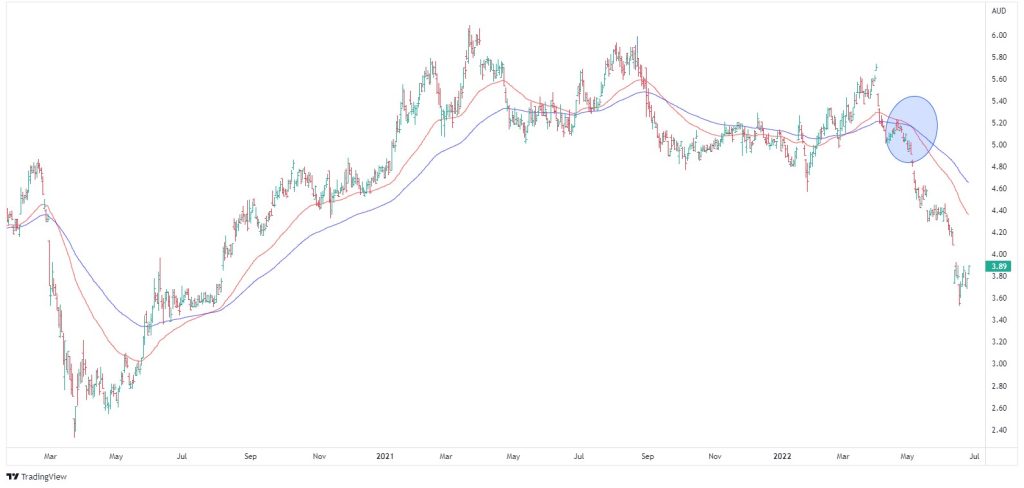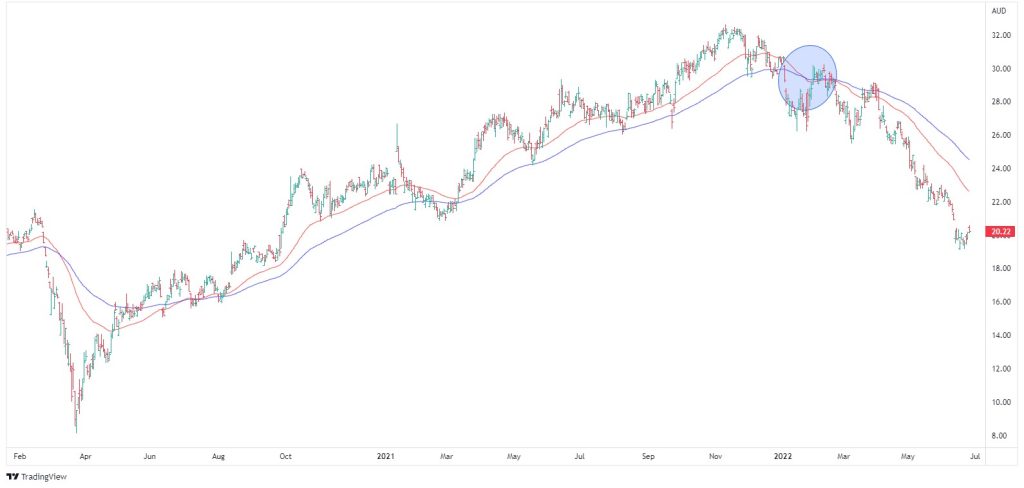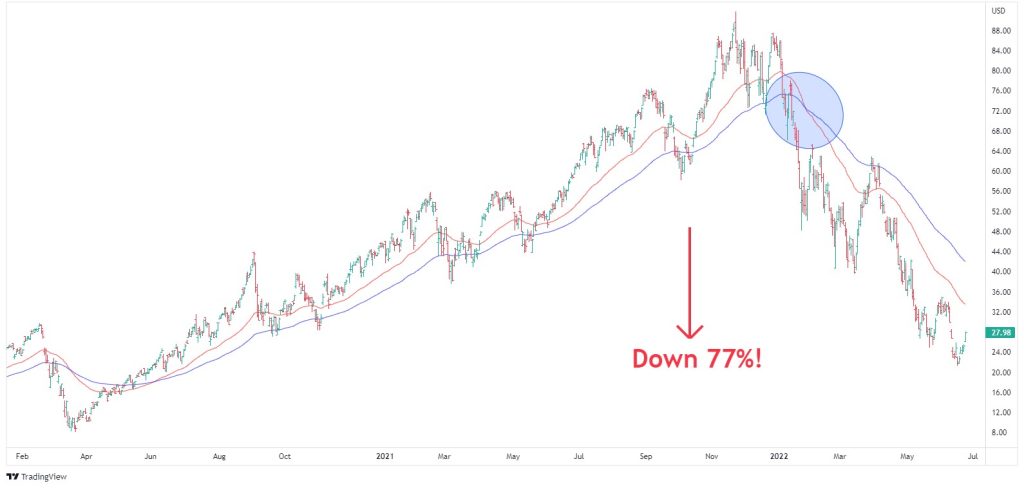Should I Buy When Stocks Are Down?

By Jason McIntosh | Updated 17 May 2023
There’s an old saying about buying low and selling high. Many people interpret this to mean that they should buy when stocks are down or falling. But this can be a high risk strategy — especially in a bear market.
This article is going to discuss why you should avoid buying a falling stock. I’ll also tell you about a popular strategy that often ruins people when the stock market is falling.
The most vulnerable stocks in a bear market are often growth stocks the that ran hard in the previous bullish phase. One such example is retailer Harvey Norman (ASX:HVN). The stock was a standout performer during the Covid recovery, but it is now trending lower.
Have a look at this chart:

A key indicator that I track is the moving average. If a stock is trading below the 50 and 100-day averages, it fails a key strength test, and investors should act with caution. When the moving averages cross and head lower, it means the trend for a stock is bearish. I believe this is the most dangerous time to buy a stock.
Pay close attention to HVN after the moving averages turn lower. Many people say this is the time to buy-the-dip. But if you do this when the price is below the moving averages, there is a high chance of further losses.
Another example is Premier Investments (ASX:PMV). Like HVN, Premier is a retailer that did well through Covid. But the positive trend is no longer evident on the charts, and this requires a change in investment strategy.
Have a look at the chart:

You’ll see that the moving averages crossed in February, and the shares have been in decline ever since. There’s been no reason to buy this stock, although many people have been buying. Anyone buying in recent months has been fighting the trend… they’ve been speculating that a falling stock will reverse course. But the path of least resistance is down.
My approach (that I apply through Motion Trader) is to follow share price trends. It’s about buying as stocks are rising (not falling), and then using risk management techniques to exit stocks when the trend changes. Trend follows make their money during the bullish periods. But when a stock is trending lower, the strategy is to protect and preserve capital.
Possibly the biggest wealth destroyer during bear markets is leverage. I’ve seen excessive leverage ruin many investors over the years.
Have a look at this graph:

This is the ProShares triple leverage Nasdaq ETF. There were stories of first-time investors making a killing in this type of fund during the bull market. Leverage is great when the market is going your way. But when it turns, it can be a disaster if you don’t have risk management strategies.
The ProShares ETF is down more than 70% from its peak. Many of the people using it to try and pick the low in this bear market have been crushed. It’s an example of why aggressive risk taking is so dangerous during a bear market.
There’s an old saying: “There are old traders, and there are bold traders, but there are no old bold traders.” And I think that’s so true. It’s the people who take excessive risk that end up bowing out of the game early.
Leverage has a way of catching people out. And risk ultimately catches up with them. As a wise older trader said to me early in my career: “Jason, if you want to get rich, get rich slowly.“
And I can tell you, he was right. The people I know who have made a lot of money in the market (and held onto it), got there slowly. They didn’t get there by going all-in in a triple leveraged fund and trying to shoot the lights out in a couple of weeks.
People who chase fast results often have high conviction in their ideas. While confidence is a valuable trait in many settings, it can be dangerous in the stock market. This article explains why.
Looking for the best ASX stocks to buy now?
Motion Trader‘s algorithms scan more than 2,000 ASX stocks daily in search of medium term investment trends. We then tell our members precisely when to buy shares. And most importantly, we tell them when to sell.
Try a no obligation FREE 14-day trial of Motion Trader, and see what an algorithmic trading approach could do for you.

Jason McIntosh | Founder, Motion Trader
Jason’s professional trading career began over 3 decades ago. He’s a founder of two stock advisor firms, a listed funds management business, and has helped thousands of investors navigate the stock market. Click here to read Jason’s incredible story of, at age 20, sitting alongside some of the world’s greatest traders (and the life changing experience that came with that).

